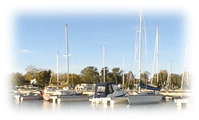|
| |
Latitude: 44.23333 , Longitude: -76.5
|
|
| |
|
|
The French originally settled upon a traditional Mississaugas First Nation site called Kateracoui (Cataraqui in the common transliteration which uses French pronunciation rules, it is pronounced CAT - AH - RAH - KWAY) in 1673 and established Fort Frontenac. The fort was captured and destroyed by the British in the Battle of Fort Frontenac near the end of the Seven Years' War in 1758. A receiving centre for fleeing refugees from the American Revolution, it became the primary community of south-eastern Upper Canada.
New settlement from the United Empire Loyalists (UEL) and Mohawks from the Six Nations in New York, led by Molly Brant, formed a significant part of an expanding population in the area at the end of the 18th century.
During the War of 1812, Kingston was the base for the Lake Ontario division of the Great Lakes British naval fleet and engaged in a vigorous arms race with the American fleet based at Sackett's Harbor, New York for control of Lake Ontario. After the war, Britain built Fort Henry and a series of distinctive Martello towers to guard the entrance to the Rideau Canal (the fort is still standing and is a popular tourist destination).
Kingston's location at the Rideau Canal entrance to Lake Ontario, after canal construction was completed in 1832 made it a vital military and economic centre of Upper Canada.
Kingston was one of the contenders for the capital of the united Canadas before Confederation, but after a brief stint as the capital from 1841 to 1844, it lost out to an alternating location of Montreal and Toronto, and then later to Ottawa in 1857, where it has resided since. Kingston was, however, the home of Canada's first Prime Minister, Sir John A. Macdonald and on June 13 1841 was the site of the first meeting of the Parliament of Canada.
During the late nineteenth and early twentieth centuries, Kingston was an important Great Lakes port and a center for shipbuilding and locomotive building, including the largest locomotive works in the British Empire (the Canadian Locomotive Company - later Fairbanks-Morse - closed in 1969), but most heavy industry has now left the city and employment is now primarily in the institutional, military, and service/retail sectors.
The term "Cataraqui", from the original native name for Kingston, applies generally to regions Northward and Westward of present-day downtown Kingston. |
| |
Hockey
Although debatable, Kingston lays claim to being the birthplace of ice hockey and the interest in the sport continues today with three NHL hockey teams competing for local fans: Toronto Maple Leafs, Montreal Canadians and Ottawa Senators.
The International Hockey Hall of Fame, established in 1943 and erected in 1965, is located in Kingston. Several NHL players, coaches and personalities have been associated with Kingston including: Bill Cook, Bun Cook, Flat Walsh, Lorne Ferguson, Bob Murray, Wayne Cashman, Rick Smith, Ken Linseman, Dick & Don Cherry, Fred O'Donnell, Doug Gilmour, Kirk Muller, Jay McKee and Bryan Allen. |
 |
| |
Sailing
The city is famous for its fresh-water sailing (it hosted the sailing events for the 1976 Summer Olympics). CORK — Canadian Olympic Regatta Kingston — is still held every August. Kingston is listed by a panel of experts among the best yacht racing venues in the USA, even though Kingston is, of course, in Canada.
Kingston is also sits amid great cruising and boating territory, with easy access to Lake Ontario, the St. Lawrence River, and the Thousand Islands including the St. Lawrence Islands National Park. |
 |
| |
Demographics
According to the mid-2001 census, the population estimates there were 146,838 people residing in Kingston, located in the province of Ontario, of whom 49.1 % were male and 50.9 % were female. Children under five accounted for approximately 5.1 % of the resident population of Kingston. This compares with 5.8 % in Ontario, and almost 5.6 % for Canada overall.In mid-2001, 14.1 % of the resident population in Kingston were of retirement age (65 and over for males and females) compared with 13.2 % in Canada, therefore, the average age is 38.1 years of age comparing to 37.6 years of age for all of Canada.
In the five years between 1996 and 2001, the population of Kingston grew by 1.6 %, compared with an increase of 6.1 % for Ontario as a whole. Population density of Kingston averaged 77.0 people per square kilometer, compared with an average of 12.6, for Ontario altogether.
At the time of the census in May 2001, the resident population of the Kingston city authority had 146,838 people, compared with a resident population in the province of Ontario of 11,410,050 people.
Areas of interest include the Royal Military College , Queens University ( Queen's), St Lawrence College , The Military Communications and Electronics Museum , Fort Henry , |
| |
|
|
| |
This article is licensed under the GNU Free Documentation License.
It uses material from the Wikipedia article "Kingston, Ontario". |
|
|
